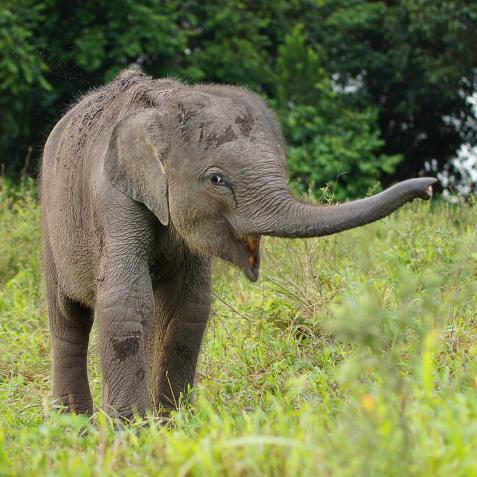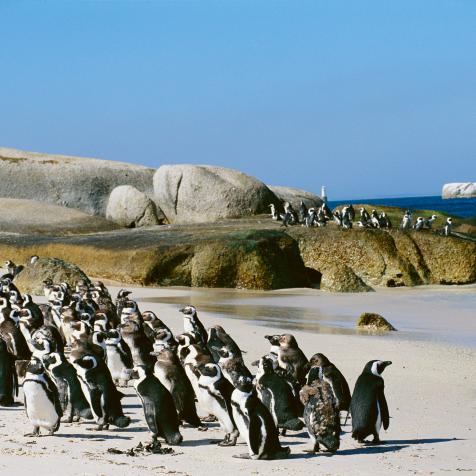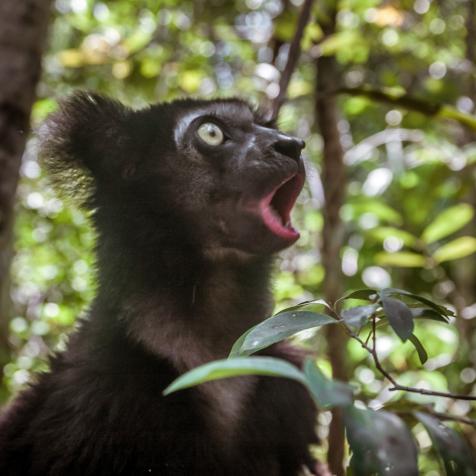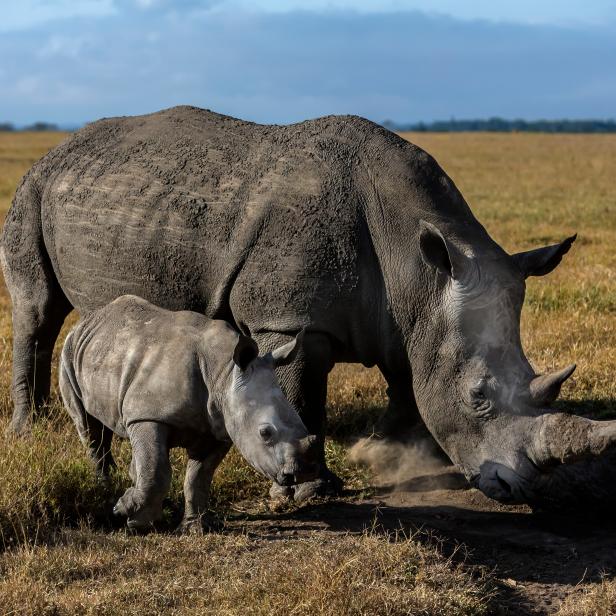
Manoj Shah
There’s a Black Rhino Baby Boom in Zimbabwe
Finally, a success story for the critically endangered animal.
Headlights swept around the last corner to light up the solid poles of the boma walls. Weary people maneuvered the metal crate into position to offload the giant drugged animal. The truck engine was cut, the antidote to the heavy sedative administered, a minute of silence, then another, and then, a deep drawing of breath. Finally, one thousand kilograms of Critically Endangered black rhinoceros stepped cautiously into new territory.
After nearly 30 years of absence, 29 black rhinos were reintroduced to Lowveld’s Gonarezhou National Park in July, a historic achievement after decades of prep work by the Gonarezhou Conservation Trust.
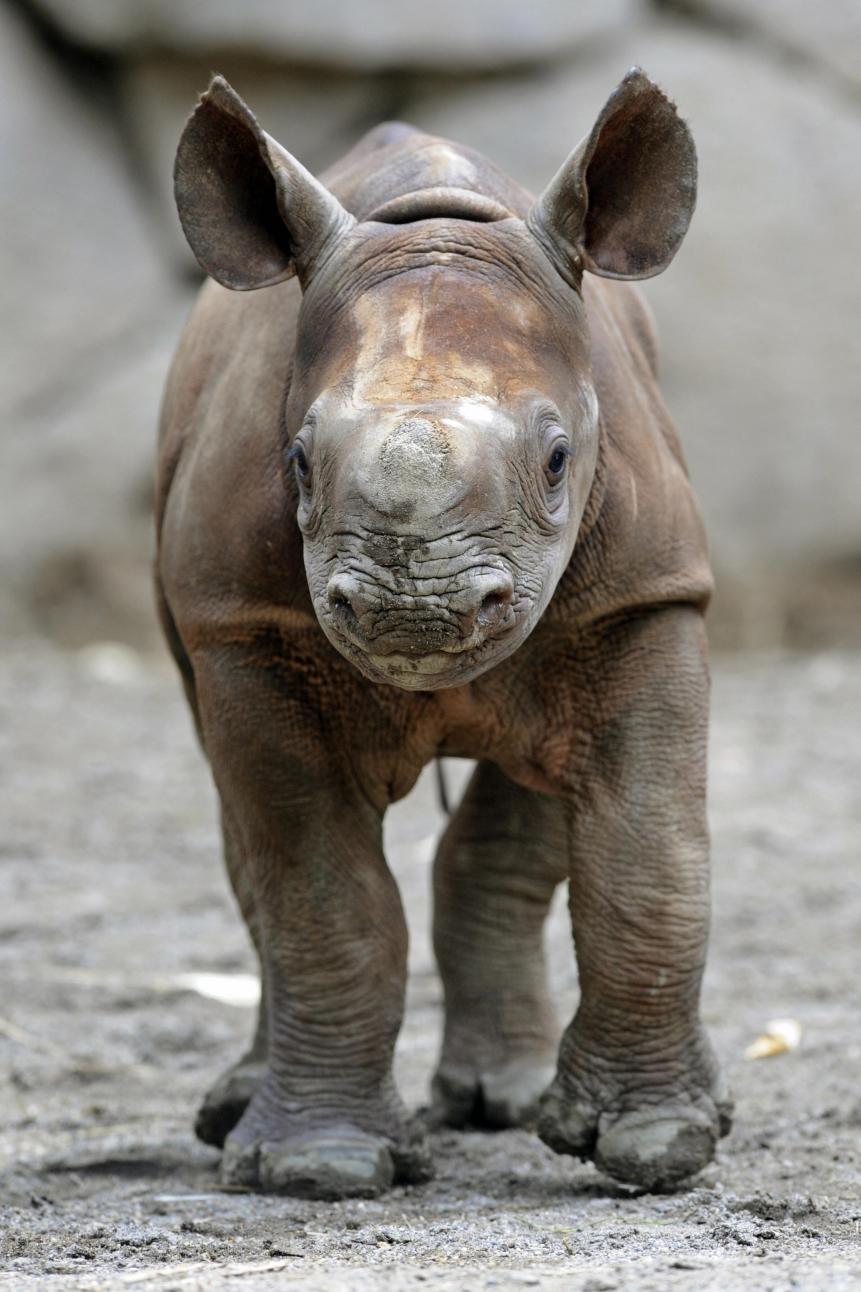
KAZUHIRO NOGI
Baby Black Rhinoceros.
“Re-establishing a black rhino population in this 5,000 km sq park, with the potential to expand significantly, is a big step in the multi-phase process to save this magnificent species from extinction,” says Natasha Anderson, Zimbabwe program manager for the International Rhino Foundation, one of the partners of the program.
And elsewhere in the Lowveld region, an arid landscape that’s home to 90% of the country’s black rhinos, there’s a baby boom afoot. Rhino numbers in the area are not only on the increase, with 17 new black rhino calves (and two white rhino calves) being born during 2020, but poaching is down thanks to the efforts of park rangers.
Zimbabwe is home to the fourth-largest black rhino population in the world, after South Africa, Namibia and Kenya, and so it’s an important region for the fight to save these animals. These critically endangered creatures have faced near-extinction thanks to organized gangs of poachers, who slaughtered nearly a quarter of black rhinos between 2007 and 2009 alone. Poaching remains the greatest threat to black rhinos, due to demand from Asian markets, especially Vietnam, and China.
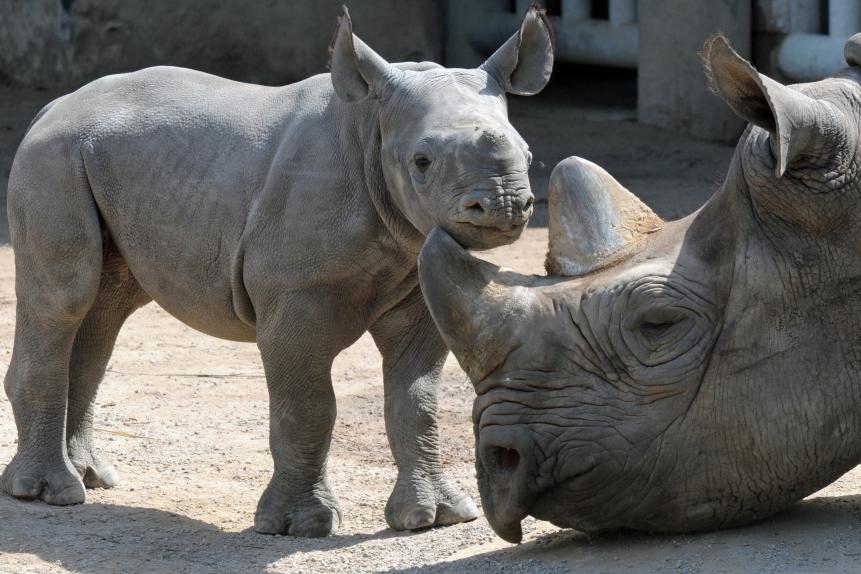
HORST OSSINGER
A newly-born black rhinoceros baby stands next to its mother.
The Lowveld region, however, has made strides in regenerating former degraded cattle range land to wildlife management areas, which are run by wildlife-based businesses, such as conservation nonprofits and tour agencies, which help safeguard not only the rhinos, but a variety of species.
The Lowveld Rhino Trust has been instrumental in this change, through implementing a comprehensive conservation program. Tactics include tracking and monitoring rhinos, treating injured animals, rehabilitating and returning them to the wild, working with local communities to build support for rhino conservation, translocating the animals to safer locations, and providing specialized support for rhino law-enforcement officials.
During 2020, the trust’s monitoring efforts resulted in an average of 85 black rhino sightings per month throughout the year, as well as 400 rhino identifications through radio tracking, camera traps, and GPS. This monitoring led to an exciting discovery for the conservationists, with trackers spotting 17 new calves. It was a busy season for the LRT team, as they helped rescue a 16-month-old rhino called Pumpkin, who was orphaned after her mother was killed by poachers. She was rescued and treated successfully for a gunshot wound. The team also ear-notched 12 additional rhinos, which helps with future identification.
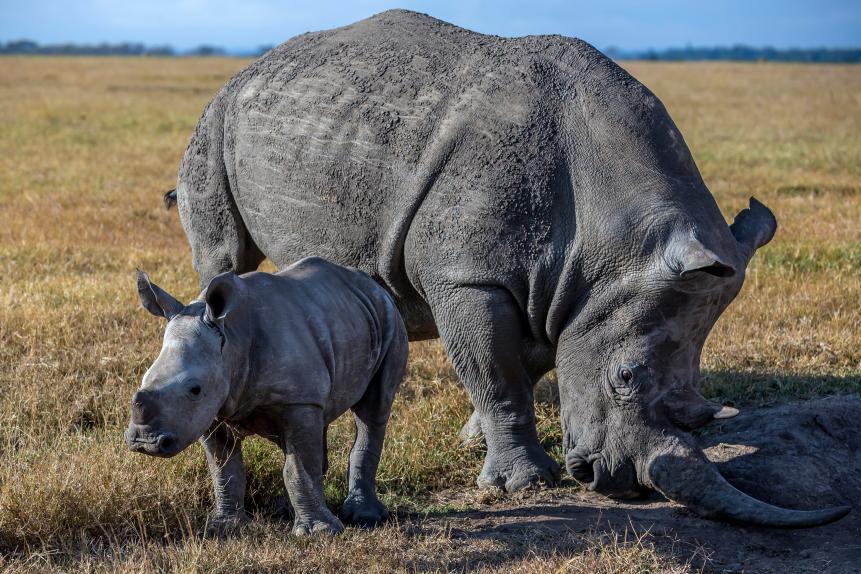
Manoj Shah
Black rhino mother with baby grazing in Laikipia.
The numbers of rhinos in the Lowveld area have grown astronomically since 1990, when the region had just 4% of the country’s population. Rhinos in Southern Africa plummeted during the 1980s, which saw the region lose 95% of its entire rhino populations. In the 1970s, an estimated 65,000 black rhinos survived in Africa. By 1992, those numbers were down to only 2,500 individuals. Rhino horns have a lucrative market in Asia, where they are believed to have medicinal value. A crackdown on poachers has helped, with two men recently being sentenced to 47 years in total for poaching rhinos at Bubye Conservancy.
Back at Gonarezhou, the rhinos are doing well. “This was a slow process, taking several years owing to funding constraints and delays in approvals,” says Anderson, “but now they’re adjusting to their new home.”





































































